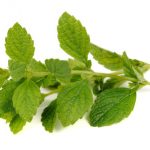Timur (Zanthoxylum armatum DC syn. Zanthoxylum alatum Hemsl.) produces some interesting fruits for the product developer to test in desserts. Timur, also known as Szechuan pepper although the soure of this pepper comes from a variety of Zanthoxylum species, not all of which have been characterised let alone understood. This is a plant native to the Himalayan region and other parts of Asia. It belongs to the citrus family (Rutaceae) and is primarily valued for its aromatic berries, which have a unique flavor profile.
The fruit can be sourced from northern India and Nepal.
The plant is a deciduous shrub or small tree that can grow up to 5 meters in height. It has compound leaves with small leaflets and produces small clusters of berries. The berries are reddish-brown in color and contain seeds within.
Flavour
The fruit flavour is described as slightly sulphurous but attractive when mixed with some prominent fruity notes. Over 130 volatiles have been isolated but only 20 have any aroma impact. Limonene, α-pinene and myrcene provide the terpenic notes. Linalool, citronellal (which is also a key volatile compound in Lemon Balm), 6-methyl heptanal and octanal offer the fatty and aldehydic notes. The spicy part is linked to (E)-methyl cinnamate and (Z)-ethyl cinnamate. The sulphurous chemicals are 4-mercapto-4-methylpentan-2-one, 3-mercaptohexanol, 3-mercaptohexyl acetate and 1-p-menthene-8-thiol are the key olfactive constituents contributing to the typical tropical and grapefruit odours (Cicchetti et al., 2017). The authors corroborated their presence using a stable isotope dilution assay.
The ethyl acetate soluble fraction of Zanthoxylum armatum led has produced two new prenylated alkaloids 2,6,7-trimethoxy-8-(3-methyl-2-butenyl) carbazole-3-carbaldehyde and methyl-2,6,7-trimethoxy-8-(3-methyl-2-butenyl) carbazole-3-carboxylate, along with three known lignans cisamin, methyl pirpirtol , fargesin and one known alkaloid dictamine (Samad et al., 2014). Their structures were described on the basis of spectroscopic and crystallographic analysis and by comparison of the data with that in the literature. All the isolated compounds were screened for the DPPH free radical scavenging activity. The two prenylated alkaloids and dictamine showed strong antioxidant activity whilst the others, only moderately so.
Uses
- Culinary Use: The berries of the Timur plant are used as a spice in various cuisines, particularly in the Szechuan and Nepali cuisines. The berries have a citrusy, tangy flavor with a distinct numbing and tingling sensation on the tongue. They are often used to add a spicy, peppery, and aromatic touch to dishes, sauces, pickles, and beverages.
- Medicinal Uses: In traditional medicine practices, different parts of the Timur plant, including the bark, roots, and berries, are used for their potential health benefits. They are believed to have antimicrobial, anti-inflammatory, and digestive properties. The plant extracts have been used to treat digestive disorders, toothaches, and rheumatic conditions.
- Aromatic and Fragrance Applications: The essential oil extracted from the Timur berries is valued for its strong aroma and is utilized in perfumes, fragrances, and aromatic products. The oil is known for its refreshing, zesty scent with hints of citrus and spices.
- Numbing Sensation: One of the distinctive characteristics of Timur berries is their ability to produce a numbing sensation in the mouth. This sensation is caused by the compound hydroxy-alpha-sanshool found in the berries. It is often described as a tingling or buzzing feeling on the tongue and lips.
It’s worth noting that Timur berries should be used in moderation due to their potent flavor and numbing effect. Some individuals may be more sensitive to the numbing sensation or may experience allergic reactions. As with any plant or herbal product, it is advisable to use the pepper under appropriate guidance, and if you have any specific health concerns or conditions, it’s always recommended to consult with a healthcare professional.
References
, , , , . (2017) Characterization of odour-active compounds in Timur (Zanthoxylum armatum DC.) fruits from Nepal. Flavour Fragr. J. pp. 1–13 (Article).
Samad, A., Badshah, S., Khan, D., Ali, F., Amanullah, M., Hanrahan, J.(2014) New prenylated carbazole alkaloids from Zanthoxylum armatum. J Asian Nat Prod Res. Dec;16(12):1126-31. doi: 10.1080/10286020.2014.967228. Epub 2014 Oct 30.

Leave a Reply